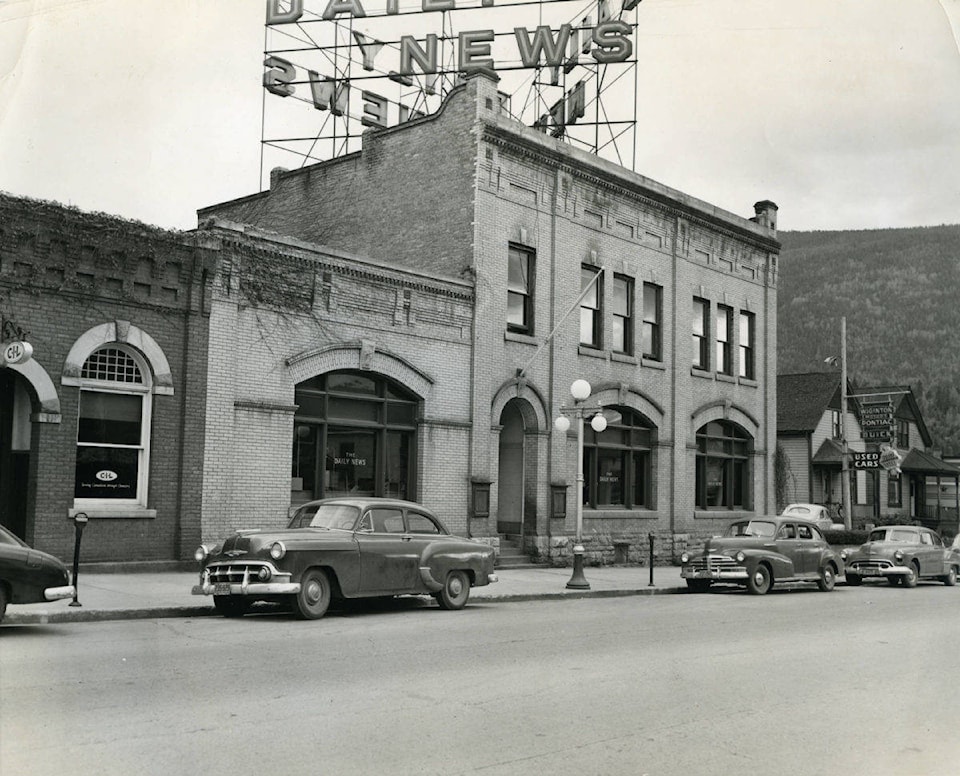Re: “Nelson newspaper history exhibit opens”
I wanted to write to thank Touchstones for hosting Greg Nesteroff’s exhibition of Nelson and West Kootenay newspaper history, and to correct one of the statements made during the panel discussion. Columnist Greg Scott claimed that John Norris’s Historic Nelson is “really the only history of Nelson we have.” This completely ignores the two books I wrote about Nelson history, as well as books by Sylvia Crooks, Frances Welwood, and other local historians.
In A Perfect Childhood: One Hundred Years of Heritage Homes in Nelson (1997), I used the city’s heritage homes as a literary device or lens through which to focus the early history. Each house thus becomes a capsule history of the city’s beginnings, much as I had done in my Nelson Daily News column, Heritage Beat (1996–2000). Many of the same key players in Nelson’s early history that Norris writes about — J.J. Campbell, H.E. Croasdaile, Monty Davys, Judge Forin, etc. — are profiled through the story of the magnificent homes they built. This covers roughly the period from the 1890s until the 1950s, overlapping Norris’s fine book, Historic Nelson, which takes us to about 1900.
Then in my second book, Hanging Fire and Heavy Horses: A History of Public Transit in Nelson (2000), I used a similar literary technique. Realizing that an entire book about streetcars and buses was likely to have only limited appeal to readers, I designed the book so that it covers the history of Nelson from the inception of the street railway in December 1899 until 1992 when Streetcar 23 began regular operations.
Discovering that nearly all of the city’s bus history had been destroyed in a fire, I had to painstakingly reconstruct 50 years of transit history from City Hall records and interviews with surviving bus drivers. The deliberations of the various city councils over that century, as they grappled with ways to make public transit sustainable, were merely a lens through which to focus the city’s wider history. To make this doubly clear, I had the graphic designer for the book run snippets of historical news from Nelson’s newspapers along the outer columns of each page. You get a clear sense of not only what was happening in the city but around the world at the time.
While writing my Heritage Beat column, which in total contained some 250,000 words on the history of the city and region — I prided myself on my accuracy. While living on a poverty level income, I spent an average of 20 to 30 hours per week doing original research and writing for the weekly column. Even though I was using the storytelling techniques of a fiction writer, I wanted to be sure that everything I wrote could be backed up by historical facts.
At the time Heritage Beat was widely acknowledged to be the most popular column in the NDN. Through this intensive research I discovered much that had been forgotten or overlooked, including the fact that in the early days of the 20th century Nelson had a third newspaper, the Economist. I also was the first to write a series of columns on Nelson’s Chinese history and women’s history, among other firsts. Yet this all seems to have been forgotten now, despite the huge labour of love that was required to make this contribution to the city’s historical record.
Sean Arthur (Art) Joyce
New Denver
